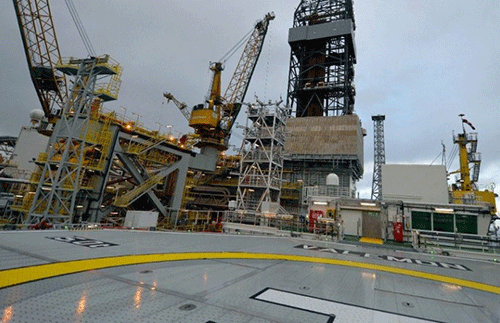Petroleum commissioner in the mines and energy ministry Maggy Shino recently said the determination on whether Namibian oil discoveries recorded in the Orange basin are commercially viable, will only be known in the next eight to 12 months.
“Work is still ongoing. Shell and TotalEnergy are now mapping the extent of the field to see if the oil will flow to the surface at a level that is commercially viable,” said Shino while addressing a Parliamentary Standing Committee on Natural Resources’ information session. The session was attended by mines and energy officials last week to specifically inform government on the oil and gas discoveries in the Orange basin, and to present a local content draft policy.
At the session, she made it clear that oil discoveries are a different story than the Kudu Gas field, with the latter at an advanced stage of just making a final investment decision to attract the required capital.
Kudu Gas is considered to be able to generate its first power by 2026, and export to national and regional markets. The project is now seen in a different light after recent oil discoveries offshore Namibia.
“The Kudu gas project is progressing to power the future. Sharing the details, key power sales arrangements are progressing. The field has the potential to produce about 820 megawatts of electricity, which is far more than national consumption,” said Shino.
The Kudu gas field is located in the northern Orange sub-basin, approximately 130km offshore, and was discovered in 1974. The resource is currently delineated by seven subsequent wells.
In 2017, BW Energy entered into a farm-in agreement for a 56% operated interest, with the National Petroleum Corporation of Namibia (Namcor) holding a 44% joint venture interest.
In 2021, BW Energy signed a farm-up agreement with Namcor, increasing the corporation’s interest to 95% in the licence area, after which the transaction was closed in 2021.
Shino said the Kudu Gas project is expected to use common green hydrogen infrastructure, to be located in Lüderitz. The southern harbour town is set to be an energy hub for Namibia.
The envisioned Kudu gas project will be used to produce blue hydrogen for export purposes. Blue hydrogen is hydrogen produced from natural gas with a process of steam methane reforming, where natural gas is mixed with very hot steam and a catalyst.
Challenges of discoveries
“The issue with our discoveries is the issue of the depth of where the oil is located. We need infrastructure that is built fit-for- purpose. We will need to incorporate floating production facilities, and they require investment in the range of about US$15 billion to US$20 billion before production,” she outlined.
The petroleum commissioner added that there is a need for Namibia to attract these investments, but that there are pitfalls which the country needs to tackle.
Shino further warned that Namibia should avoid a scenario where the economy is over-dependent on oil revenues, and advised that the oil revenues be used to develop other sectors.


